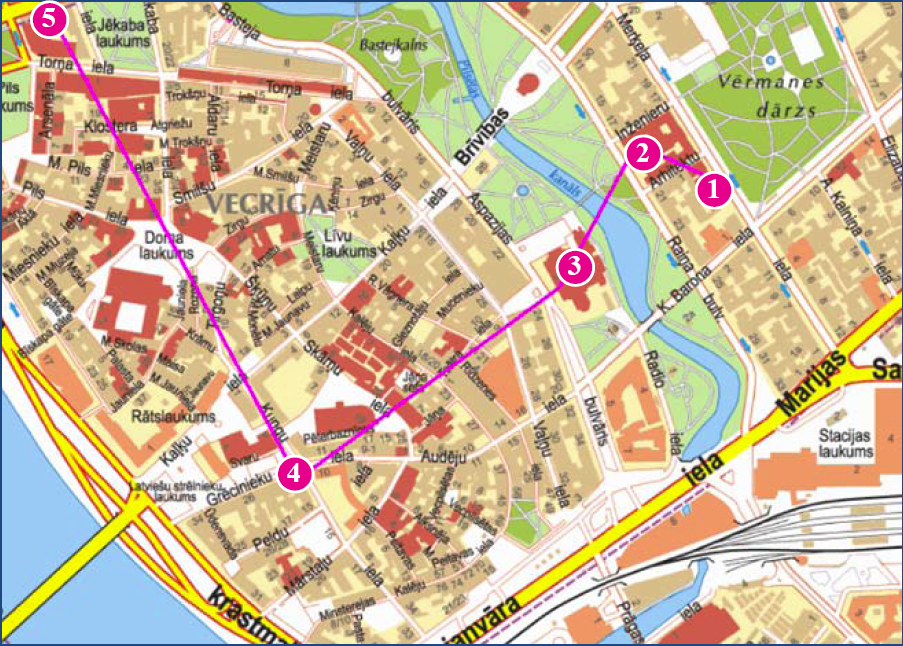Conference venue

1. The Riga Latvian Society House
2. The University of Latvia
3. The Latvian National Opera
4. The Mentzendorff’s House
5. The Bank of Latvia
The University of Latvia
The University of Latvia named at that time "The Latvia Higher School" was founded on September 28, 1919 on the basis of the former Riga Polytechnic (founded in 1862). In 1923 this school received its now resumed name - the University of Latvia (Universitas Latviensis).
In the period between 1919 and 1940 the University of Latvia was the greatest centre of higher education, science and culture. The former building of Riga Polytechnic in 19 Raina boulevard serves as the symbol of the University even nowadays.
With Latvia regaining freedom the Supreme Council of the Republic of Latvia confirmed the Constitution of the University of Latvia on September 18, 1991. It stated that the Higher School is "a state establishment of academic education, science and culture which serves the needs of Latvia and people".
Brouchure of the University of Latvia (pdf)
Latvia and Riga
Latvia is the central country of the Baltic States (Estonia, Latvia and Lithuania) and is located in North-eastern Europe on the east coast of the Baltic Sea. Its geographic coordinates are 57°00'N latitude and 25°00'E longitude. It consists of fertile lowland plains and moderate hills, with most of its territory less than 100 metres above sea level. It has an extensive network of rivers, thousands of lakes and hundreds of kilometres of undeveloped seashore lined by pine forests, dunes, and continuous white sand beaches.
Latvia is bordered by Estonia to the north, Russia and Belarussia to the east, Lithuania to the south and the Baltic Sea to the west. Its strategic location has made it an international crossroad for trade, commerce and cultural exchange since ancient times. Vikings followed the ‘Amber Road’ through Latvian territory along the Daugava River to reach Byzantium and the Mediterranean Sea.
Latvians are the indigenous people of Latvia, and the Finno-Ugric Livs (or Livonians) are the only indigenous minority. Latvia’s present ethnic mix is largely a result of massive post-war immigration, which resulted in a decline in the share of ethnic Latvians from 77% in 1935 to 52% in 1989.
European Union, NATO, United Nations Organisation, Council of Europe, World Trade Organisation, Organisation for Security and Co-operation in Europe, Council of the Baltic Sea States, etc.
More information about Riga and general information about activities:
http://www.vecriga.info/
http://www.rigathisweek.lv/
http://www.inyourpocket.com/latvia/riga/en/
